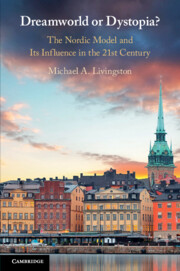The Nordic countries are admired for high employment, low levels of poverty and inequality, encompassing welfare states, and peaceful industrial relations. Yet the model is criticised for hampering the employment opportunities of vulnerable groups. The literature identifies several potential mechanisms of exclusion. Compressed wage structures may make employers reluctant to hire certain workers for fear that their productivity is too low to justify the cost. Second, generous benefits lower individuals’ incentive to work. Third, businesses increasingly specialise in high-skill activities. We explore these arguments comparatively by considering the employment chances of two vulnerable groups: disabled persons and migrants. The Nordic countries are compared with other rich democracies that take different approaches to social protection and wage dispersion. The Nordic countries do not perform systematically worse than other ‘varieties of capitalism’. In line with recent research, we also find that there is considerable intra-Nordic variation, which calls for further study.
